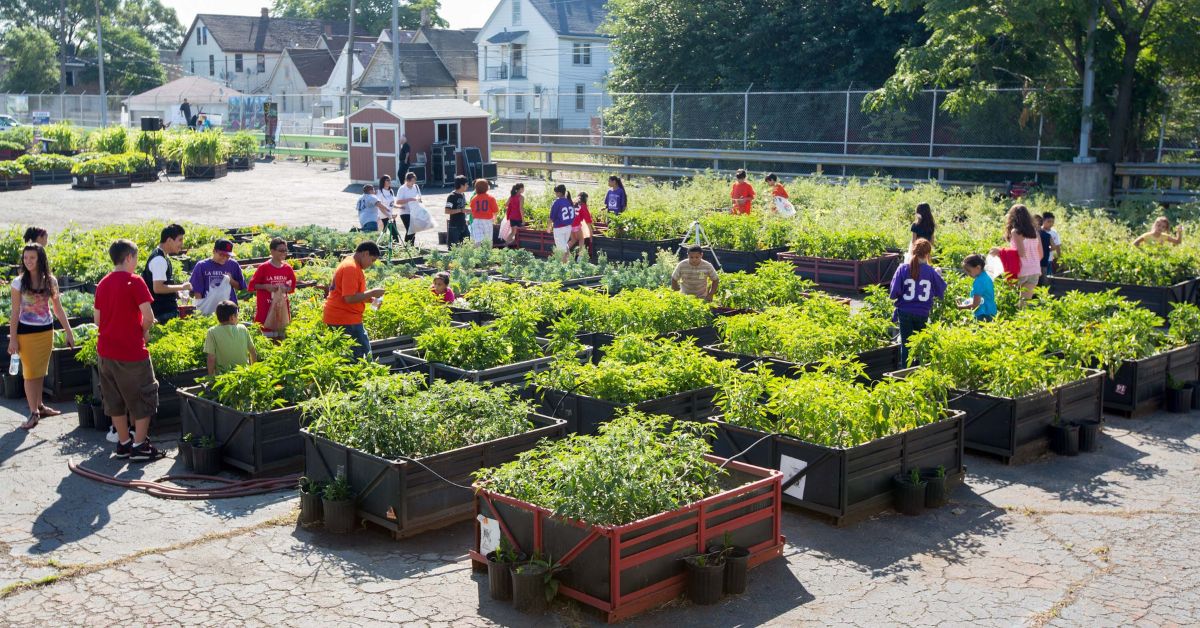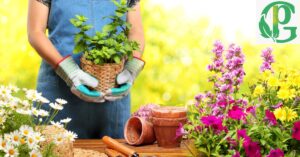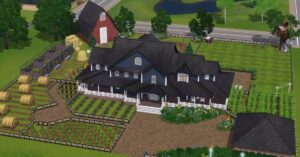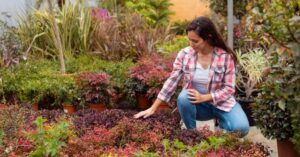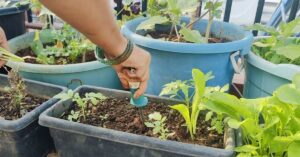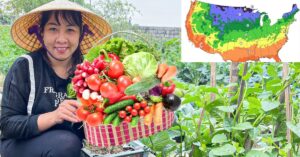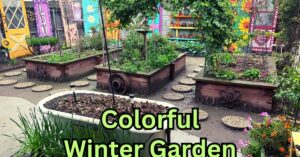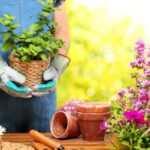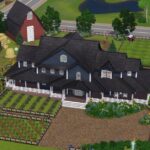Gardening zones identify regions with comparable climates for plant hardiness outdoors. Seattle, located in the mild Pacific Northwest, experiences moderate year-round temperatures placing it in the USDA planting zone 8. This zone ranges from average annual minimum temperatures between 0-10 degrees Fahrenheit allowing for a variety of cold tolerant plants.
Wondering what vegetables, fruits and flowers will thrive in Seattle’s climate? Understanding zones helps indicate what can grow without protection and what requires indoor starting. Zone 8 shows Seattle offers enough cold and rain for many landscape, herb, and vegetable varieties.
Now knowing Seattle is zone 8, research zone 8 tomato, pepper, lettuce, berry and perennial varieties. Those on the edge of hardiness may start indoors weeks before the last frost to boost survival when planting outside. Refer to online or nursery zone 8 guides for local gardening success in your own yard.
Understanding Plant Hardiness Zones
Plant hardiness zones identify regions with comparable climates for determining what landscape plants can overwinter outdoors without protection. The United States Department of Agriculture (USDA) developed these zones based on the minimum annual temperatures an area experiences. Knowing the zone enables gardeners to identify which types of plants will reliably grow and survive winter in their location.
Seattle is situated within USDA hardiness zone 8. This indicates that on average, the lowest temperature occurs between 0°F to 10°F. Perennials, trees and shrubs considered zone 8 tolerant can endure these low temperatures without damage. Referring to planting guides specifying characteristics of each zone assists homeowners in selecting reliable flowers, vegetables and other hearty varieties for the maritime Pacific Northwest climate.
Zone 8 Climate and Conditions
Zone 8 encompasses regions with mild winters, such as much of western Washington. Seattle benefits from its proximity to bodies of water, which moderate temperatures and result in significantly warmer winters than areas further inland. Summers in the city tend to be comfortably warm with daytime highs averaging in the lower 70s°F.
The maritime influence also brings higher rainfall levels year-round when compared to zones further south. On average, Seattle receives over 37 inches of precipitation annually with most falling as light drizzles or showers rather than heavy downpours. This damp environment favours plants adapted to periods of rain without experiencing drought. The longer daylight hours of summer combined with occasional sunny breaks create optimal growth conditions for a diverse array of flowers, fruits, and vegetables suited to Seattle’s zone 8.
Which Plants Thrive in Seattle?
Hardy perennials, shrubs, trees and groundcovers that tolerate zone 8 winters include maple trees, camellias, rhododendrons, ferns and hostas. All produce vibrant displays that remain evergreen during the rainy season. Vegetables such as kale, broccoli, cabbage, carrots, potatoes and lettuce produce bountiful harvests when planted in early spring.
Berries including blueberries, blackberries, raspberries and strawberries thrive in Seattle. Be sure to select varieties labeled as zone 8 suitable. Many flowers flourish as well, for instance tulips, daffodils, astilbes, hellebores and daylilies. Herbs such as rosemary, thyme and sage grow year after year in the protected environment. With attention to individual needs, various edible and ornamental plants provide backyard beauty matching Seattle’s temperate surroundings.
Starting Seeds Indoors or Outside?
Deciding whether to start vegetable, flower or herb seeds indoors versus sowing directly outside depends on the projected last spring frost date. As a general rule, Seattle’s average last frost occurs around mid-April. However, the timing can fluctuate by a couple weeks depending on the year.
Hardy plants adapted to Seattle’s zone 8 such as carrots, beets, kale and lettuce may be seeded outdoors in early March or April. Others more susceptible to frost benefit from a 6-8 week head start indoors under grow lights or near a sun-drenched window. Transfer seedlings outside after the last expected 32°F nighttime temperature passes. Precautions like cloches help protect tender transplants.
Tips for Vegetable Gardening

Crucial steps to success include testing soil moisture and pH levels, as Seattle dirt may become compacted or overly acidic over time. Make amendments as needed. Well-draining, rich soil allows vegetables to take root and flourish.
A sunny spot with at least 6 hours of direct rays daily produces optimal yields. Semi-shade or partially sunny microclimates still accommodate many greens and herbs. Tierra garden beds paired with mulch keep weeds at bay and soil moist. A compost system provides natural fertiliser.
Rotating annual crops prevents disease and replenishes soil nutrients. Intersperse perennial beds amongst vegetables for attractive barriers that attract helpful insects. Proper watering during dry spells supplies bountiful crops to enjoy throughout late spring and summer seasons.
Best Fruits to Grow in Zone 8
Several fruits bear abundant, delicious harvests suitable for home gardens in Seattle’s zone 8. Raspberries flourish either through summer bearing reds or fall/everbearing black raspberry varieties. Blueberries require acid soil but produce nutritional fruits over summer months.
Hardy kiwis tolerate damp conditions while gracing fences and arbours with fall edibles. Dwarf flowering quince, currants and gooseberries provide winter interest along with edible crops. Figs, once established, create low-maintenance produce with minimal care. Keep new growth pruned out from winter and watch fruit develop by midsummer.
For home orchards, consider disease-resistant apples and pears grafted onto dwarfing rootstocks. These compact trees fit smaller yards while still offering annual crops. With decent chill hours, cherries and plums also bear in Seattle when planted in full sun and well-draining soil conditions.
Flower Varieties Suitable for Seattle
Beautiful blooms thrive when gardeners select varieties proven hardy in Seattle’s climate. Daffodils, tulips and hyacinths naturalise in shade or sun, reblooming each spring. Colourful all-season choices like ajuga, lamium, astilbes and hostas blanket beds and borders.
Hardy mums and carnations fill the early fall season with cheerful hues. Mandevillas, ferns and hellebores provide greenery accented by delicate blooms during cooler months. Rhododendrons, camellias and azaleas present vibrant flowers in late winter and spring when other plants rest dormant.
Annual pops of colour through columbines, lobelia, petunias, begonias, geraniums and impatiens refresh containers and gardens each year. They suit sunny or partial shade areas. By choosing flowers well-adapted to Pacific Northwest conditions, Seattle residents enjoy colourful displays throughout changing seasons.
Planting Dates and Schedules
To maximize harvest potential while avoiding late frosts, Seattle gardeners follow a planned planting calendar coordinated with the chill hours their zone receives. For example, broccoli, Brussels sprouts and cabbage go into the garden in early March.
Carrots, beets, radishes and greens may be seeded indoors six weeks before the last expected frost for transplanting once temperatures consistently rise above 40°F outside. Popular spring bloomers like pansies, daffodils and tulips emerge in February and March. Warm weather crops like tomatoes, basil and eggplant await the last frost date around mid-April for planting.
Summertime flowers start from seed in May. Perennials showing new growth and hardy annuals find homes throughout April and May before hot spells arrive. Planting schedules provide a timeline for successful crop production and continuous ornamental interest aligned with Seattle’s seasonal variations.
Landscaping and Yard Ideas
Maritime gardens beautifully showcase hardy varieties in zones 8 through 9 across Washington state. Xeriscaping with efficient irrigation suits drought-prone microclimates. Raised beds filled with rich compost blend form with function.
Evergreen foundation plantings provide privacy and visual interest year-round. Clematis vines, wisteria and climbing hydrangeas give walls and arbours lush foliage accents. Retaining walls terrace inclined properties for maximum planting options.
Whimsical uses include potager vegetable designs alongside cut flower beds. Orchards incorporate espaliered fruit trees essences of European countryside tranquillity. Winding pathways invite exploration through colourful, scent filled scapes echoing lush Northwest forests. With imagination, any outdoor space achieves personalised natural beauty matching zone 8.
Referencing Gardening Resources
Professional and home gardening associations offer expert advice tailored to the Puget Sound region. Websites publish informative articles on seasonal maintenance, problem solving and plant profiles specific to zone 8. Book retailers stock reference materials including Pacific Northwest bestseller books on organic methods in maritime climates.
Public demonstration gardens showcase successful cultivation of edibles, natives and ornamentals for Seattle backyards. College extension services provide research-based guidance adaptable to microclimates. Nurseries furnish plant tags detailing mature sizes and best growing conditions for selections new to home landscapes.
Garden centres house knowledgeable staff answering questions from novices and long-time residents alike. Community gardening clubs encourage camaraderie and shared learning through challenges presented by evolving conditions in zone 8. By utilising regional experts, avid gardeners harvest more beauty and produce from their passion each season.
FAQ’s
What zone is Seattle in?
Seattle is located in USDA planting zone 8.
When should I start seeds indoors?
Vegetable, flower and herb seeds that are more susceptible to frost should be started indoors 6-8 weeks before the last expected frost date in mid-April.
What fruits grow well here?
Berries like raspberries, blueberries and strawberries thrive in Seattle, as do apples, pears, kiwis and miniature fruit trees.
What flowers do best?
Hardy perennials like hostas, ferns and rhododendrons bloom reliably, along with tulips, daffodils and annuals suited for the Pacific Northwest climate.
Conclusion
Understanding Seattle’s classification as zone 8 assists gardeners in choosing vegetation sure to prosper throughout the region’s temperate seasons. Referencing planting guides informs selecting fruits, vegetables, flowers and landscaping matching the zone’s average yearly climate.
To succeed in cultivating an abundant and attractive garden matching the conditions of the Pacific Northwest, studying Seattle’s status as a zone 8 location aids residents in picking reliable crops, perennials and designs tailored for the mild, moist environment proven to nourish beauty from the earth.
